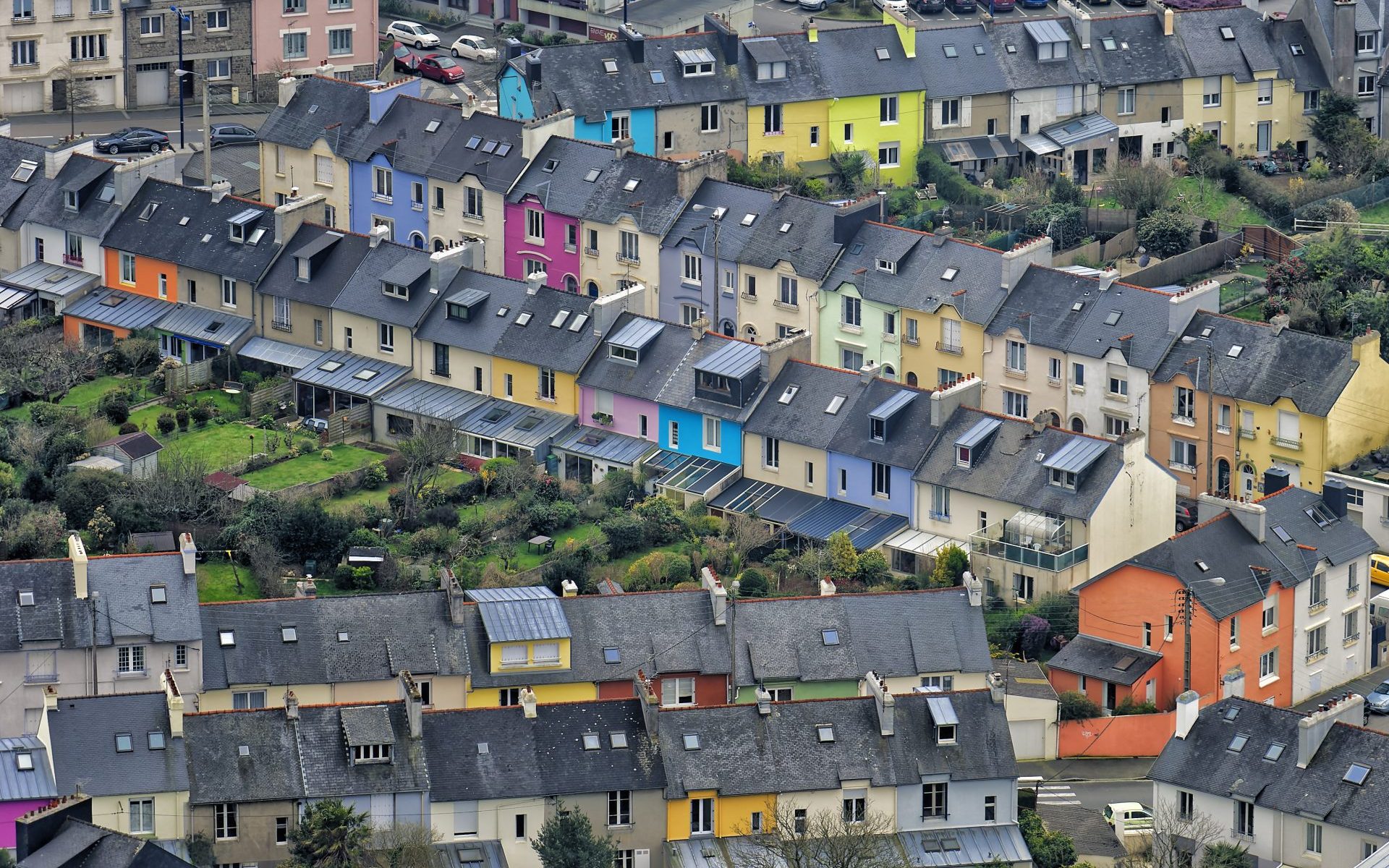Frédéric Le Mouillour, Brest. Kérigonan neighbourhood, 2013.
This aerial photograph shows the Kérigonan neighbourhood in Brest and in particular its small houses with their colourful facades.
This district, which came into being between the two world wars, saw the first low-cost housing, built to combat the housing shortage of the time. The development plan resulted in a star-shaped urban composition: the streets are organised around a central circular space.
The houses in the photograph are small family dwellings with gardens. They were not always as colourful as they are today. Legend has it that it all started when a local childminder decided to paint her house in bright colours and her neighbours all followed suit. In any case, this spontaneous burst of colour in the neighbourhood, which dates back some twenty years, breaks with the image of the ‘grey city’ that was widespread in the 1980s. It is a simple gesture that challenges a state of affairs, while at the same time offering an attractive alternative.
The value of this citizens’ initiative was recognised by the municipality, which understood the advantages of painting façades in bright colours in Brest. Half a century after the Reconstruction, just as the housing stock began to suffer from dilapidation, splashes of colour made their way into Mathon’s ideal city.
Sonia de Puineuf

